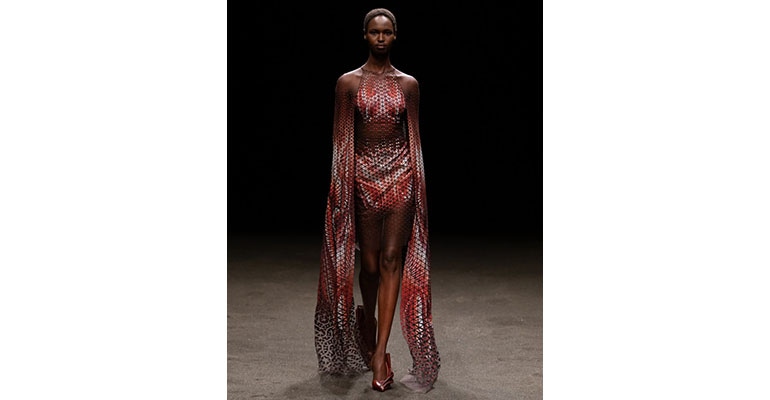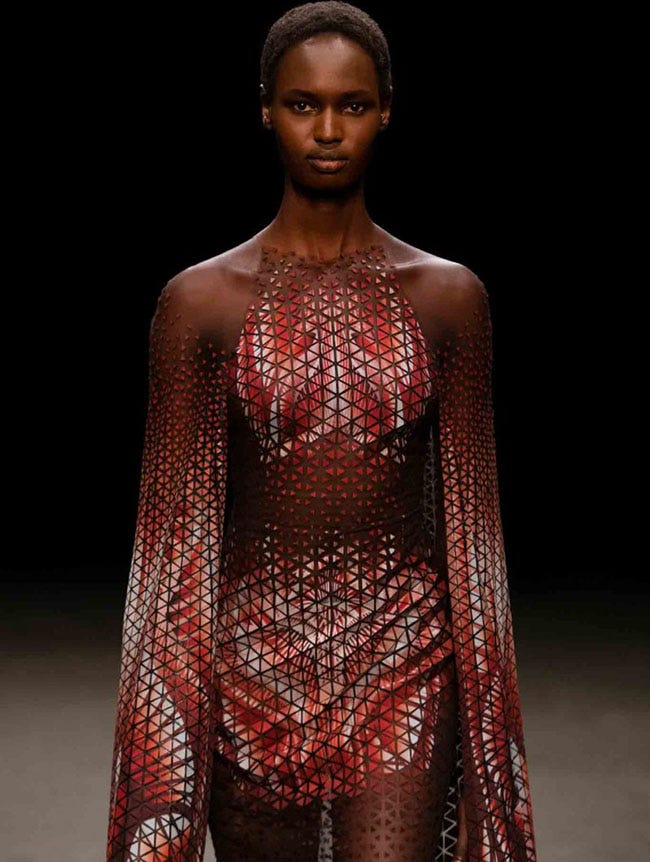Look What the Tide Brought In: Couture Made from Ocean Plastic
Dutch couturier Iris van Herpen partnered with Parley for the Oceans to design a stunning dress made from upcycled marine debris.
February 19, 2021

Edgy Dutch couturier Iris van Herpen recently introduced her spring collection, and one of her centerpiece designs uses ocean plastics to make a fashion statement. She partnered with Parley for the Oceans, an environmental group combatting marine pollution, to transform plastic waste into a stunning dress.
As van Herpen explained to Vogue, reclaiming ocean plastic to design haute couture is not a contradiction in terms. “Of course [couture] clients expect the highest quality out there, so you don’t want to go sustainable if you lower the quality,” she told Vogue. “We are now at a moment where the quality [between an organic silk and a recycled polyester] is completely equal…. Now it’s really a matter of decision, it’s not a matter of choosing a quality. Basically, there’s not a lot of reason not to use sustainable materials anymore, other than changing your mindset.”
Van Herpen used Ocean Plastic fabric developed by Parley for the Oceans and its network to fabricate the Holobiont dress pictured here. The material is created from upcycled plastic waste intercepted by Parley from remote islands, shorelines, waters, and coastal communities, explains the environmental organization on its website. The fabric was first used in 2016 by adidas for its UltraBOOST Uncaged Parley high-performance sports products. The line included the first mass-production running shoe created using Ocean Plastic and soccer jerseys for European soccer powerhouses Bayern Munich and Real Madrid. Thanks to van Herpen’s vision, the material has moved on from the beautiful game to beautiful clothing on the catwalk. It was an easy transition, she told architecture and design media outlet Dezeen.
|
The refinement of the weave makes Ocean Plastic suitable for haute couture design, explained Iris van Herpen. |
For the Holobiont dress, the designer first printed the fabric before laser-cutting it parametrically into fine triangle tessellations, in order to create a ‘translucent and fragile interconnectedness’ with the skin,” reported Dezeen.
According to van Herpen, the refinement of the weave is what makes the fabric so suitable for haute couture design.
"When most people think of recycled fabrics, they think of stiffer, less-appealing materials. But that is history now, partly thanks to Parley — the quality of the recycled fabrics is now so high that it is usable for even high-end couture looks,” van Herpen told Dezeen.
About the Author(s)
You May Also Like





